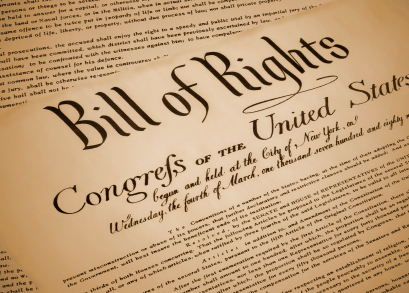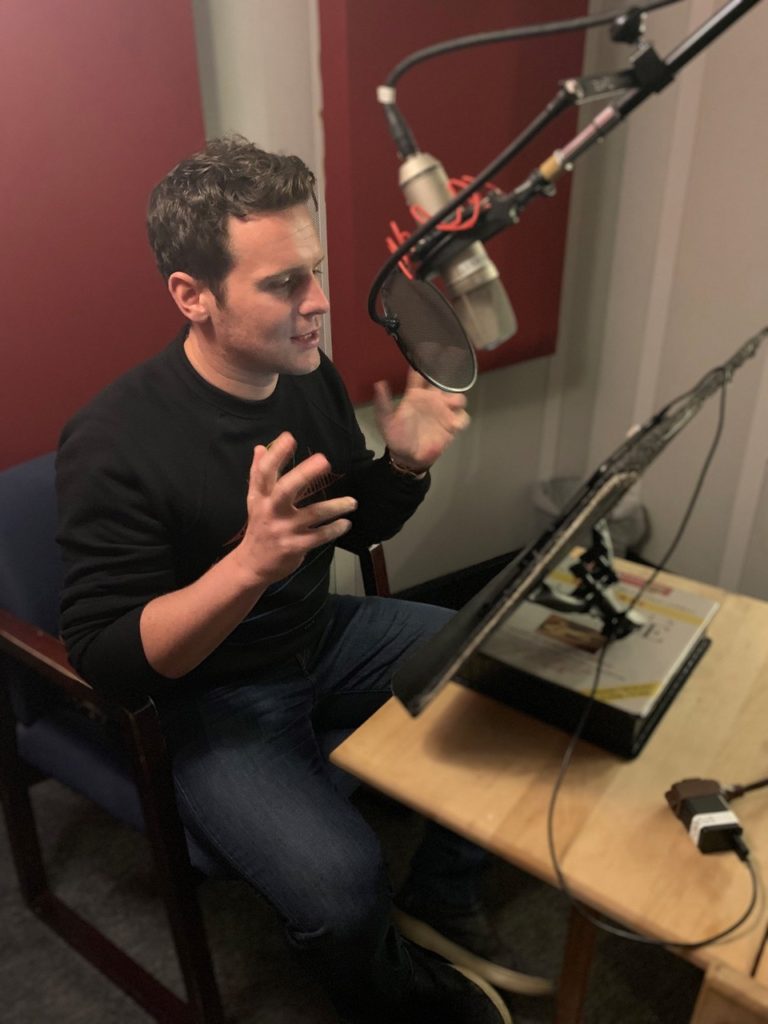In his now infamous comments on the Newtown, Connecticut horror, National Rifle Association executive vice president Wayne LaPierre attempted to shift responsibility from guns themselves to those who portray violence.
“And here’s another dirty little truth that the media try their best to conceal: There exists in this country a callous, corrupt and corrupting shadow industry that sells, and sows, violence against its own people.
“Through vicious, violent video games with names like Bulletstorm, Grand Theft Auto, Mortal Kombat and Splatterhouse. And here’s one: it’s called Kindergarten Killers. It’s been online for 10 years. How come my research department could find it and all of yours either couldn’t or didn’t want anyone to know you had found it?
“Then there’s the blood-soaked slasher films like ‘American Psycho’ and ‘Natural Born Killers’ that are aired like propaganda loops on ‘Splatterdays’ and every day, and a thousand music videos that portray life as a joke and murder as a way of life. And then they have the nerve to call it ‘entertainment.’
“But is that what it really is? Isn’t fantasizing about killing people as a way to get your kicks really the filthiest form of pornography?”
You bet it is! But in taking the entertainment media to task, in essentially pitting the Second Amendment against the First, LaPierre is actually bringing up an important and far-reaching issue.
Just as many advocate restricting the Second Amendment’s support of the right to keep and bear arms in the name of public safety, should we restrict the First Amendment’s protection of freedom of speech and the press if we think it leads impressionable people to violence?
The basic question is this: What effect do movies and television, video games, sadomasochistic images and popular music have with respect to encouraging violence?
Let’s establish a couple of basic concepts.
First, the issue of graphic child pornography has no place in a discussion of the First Amendment. It is a special case that is not and should not be protected. Any image involving a child or even appearing to involve a child is, by its very nature, exploitative and suggestive of a crime and is therefore a crime in and of itself. Written child pornography is universally disgusting and reprehensible, but does not cross that threshold of having committed a crime, so I reluctantly exclude it. (And please don’t mistake such literary works as Vladimir Nabokov’s Lolita as fitting into this category. You know the kind of thing I’m talking about.)
Second, let us concede that the proliferation of violent images, particularly as young teenage boys see them in movies and video games, does desensitize them to the actual effects of violence. Yes, my friends and I all played with toy guns as kids and, no, it didn’t prevent us from appreciating real violence. But our “gunplay” was largely an act of imagination, devoid of the psuedorealism of today’s body strewn video game scenarios.
Having acknowledged this, though, is Mr. LaPierre’s implication – a widely shared one – that media cause crime and violence a valid proposition?
The short answer is no. We have seen no convincing evidence that anyone who was not already motivated to commit public, personal or sexual violence has been led to by consuming suggestive media.
For example, will a devotee of gansta rap suddenly transform into a brutalizer of women? No. He might treat his girlfriend with less than the respect she deserves, but he will not slap her around unless he was already prone in that direction. Will a young adult obsessed with “Grand Theft Auto” suddenly get the urge to make his way up the ladder of the criminal underworld? Not unless he was already so inclined.
The point is, the media do not create criminals from individuals who would not otherwise become such. It merely excites and provides specific examples to those who already have the mindset. Similarly, alcohol consumption does not make someone into a criminal, but it can lower the inhibitions of someone who already has those leanings.
By the same token, removing all suggestive media would not have the decisive effect (if it were possible, which it is not) that removing all guns would have. If there weren’t any guns in private hands, no crimes would be committed with guns. On the other hand, as much as John Douglas and I decry all forms of child pornography, as John says, “If a child molester can’t get the kind of pornography he wants, he’ll create it himself just by looking at the children’s clothing section of the JC Penney catalogue and fantasizing about the models.”
To combat violence seriously, we have to understand the dynamics that cause it. As John has said about the role of law enforcement in societal issues, “If you’re using us to solve your social problems, you’re already too late.”
And if you want to blame the media for causing violence, you’re also already too late.




























@ joe:
I did a quick correlation between the number of civilian guns and the homicide rate. It was weakly negative (-0.22; perfect negative would be -1) and significant on the 95% confidence interval. It was simple and you can do it in Excel.
However, the scatter was enormous, not to mention that it was only linear in a log plot.
So, as the number of guns in a society goes up, homicide goes down. This (to me) seems likely due to homicide or number of guns being correlated to something else.
Something to look at might be the idea of crime “hotspots.” There’s a lot of research on those and they might be a better place to answer the question “How to reduce the homicide rate?” than the classic “guns are good (or evil)” arguments. (e.g. http://www.nij.gov/topics/technology/maps/ncj209393.htm )
This is an interesting comment from a poster on “The Blaze” http://blog.jonmcnaughton.com/2013/01/how-to-lower-gun-violence.html
Well, I am French and I can comment on the apparent gun ownership stats in France. Apparently, we own a skyrocketing 31 guns per inhabitant, much lower than the USA but actually quite high (imho). The difference is that the only gun I’ve ever seen or ever known someone to own in my environment is a hunting gun. Furthermore, not 1 in 3 French own a gun – most own absolutely none and would never think of doing so. I guess what happens, then, is that maybe every hunter owns maybe 2 hunting rifles. Finally, owning and carrying hunting guns is regulated – hunting guns require a license (even though I am actually not so sure every hunter knows how to shoot straight) and cannot be legally carried to places where hunting is not supposed to happen. Hunting guns, obviously, can be deadly if used against humans, but they are not something you can easily illegally carry on you in town without people noticing. I would also have a hard time assuming we could have a mass killing of 20 or so people with a hunting rifle. All in all, we are not a nation of gun ownership, and we are a nation of too high but still far lower homicide rates than the US.
You obviously cannot compare the US with countries like Liberia, as here many other issues including civil war, maybe machete ownership (more than gun ownership), etc. come into play.
These are the stats I found http://www.gunpolicy.org/firearms/region/canada
Liberia had less than 15 handgun murders a year and was in the middle of a civil war. The United States has twice the number of guns per capita than any country I could find and fewer regulations.
@ joe:
That’s not true if these numbers are accurate:
http://en.wikipedia.org/wiki/Number_of_guns_per_capita_by_country
http://en.wikipedia.org/wiki/List_of_countries_by_intentional_homicide_rate
Liberia, for example, has a low gun ownership rate (1.6 guns per 100, vs. 89, 46 and 31 per 100 for the USA, Switzerland and Canada, respectively), but a very high murder rate (10 per 100,000, vs. 4.8, 1.6 and 0.7 per 100,000 for the USA, Switzerland and Canada, respectively.)
In fact, it appears that the old “an armed society is a polite society” holds fairly well, with the US being an outlier.
On the other hand, most of those highly armed nations (Canada, Switzerland, Sweden, Norway, etc.), also tend to have strong social welfare nets (with Saudi Arabia as an outlier – both low homicide and high gun ownership.)
It also seems that another factor “very armed, low homicide rate” nations have in common is mandatory gun education before licensing.
Mill’s Methods says that you alter variables to determine cause. Many countries have the violent videos, games and music that we have but don’t have the guns we do. We have the most violent crime. Guns are the variable, guns are the cause.
We agree, Connor.
As a member of the NRA, it pains me to see the 1st amendment attacked to back the ideals of the 2nd. I couldn’t disagree with LaPierre more in this instance.
There is no simple answer for why these things happen. It isn’t the availability of guns, or the violent nature of video games, or the perceived failure of the mental health system, etc. It’s a complex combination of dozens of factors, many of which we may never know.